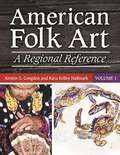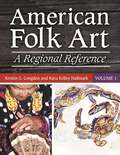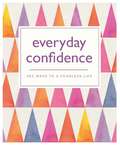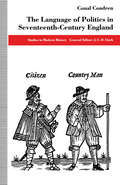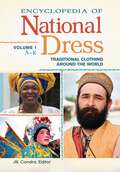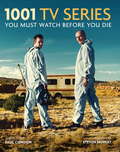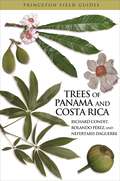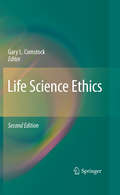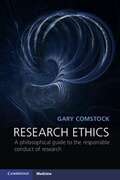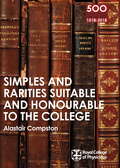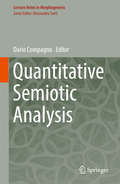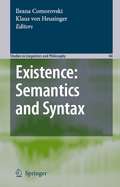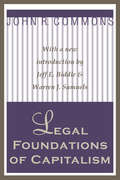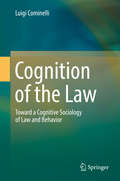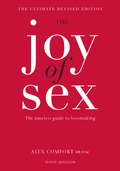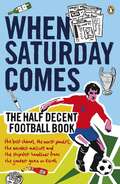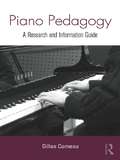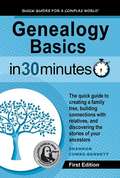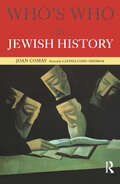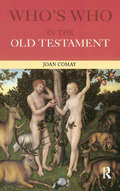- Table View
- List View
American Folk Art [2 volumes]: A Regional Reference [2 volumes]
by Kristin G. Congdon Kara Kelley HallmarkFolk art is as varied as it is indicative of person and place, informed by innovation and grounded in cultural context. The variety and versatility of 300 American folk artists is captured in this collection of informative and thoroughly engaging essays.American Folk Art: A Regional Reference offers a collection of fascinating essays on the life and work of 300 individual artists. Some of the men and women profiled in these two volumes are well known, while others are important practitioners who have yet to receive the notice they merit. Because many of the artists in both categories have a clear identity with their land and culture, the work is organized by geographical region and includes an essay on each region to help make connections visible. There is also an introductory essay on U.S. folk art as a whole.Those writing about folk art to date tend to view each artist as either traditional or innovative. One of the major contributions of this work is that it demonstrates that folk artists more often exhibit both traits; they are grounded in their cultural context and creative in the way they make work their own. Such insights expand the study of folk art even as they readjust readers' understanding of who folk artists are.
American Folk Art [2 volumes]: A Regional Reference [2 volumes]
by Kristin G. Congdon Kara Kelley HallmarkFolk art is as varied as it is indicative of person and place, informed by innovation and grounded in cultural context. The variety and versatility of 300 American folk artists is captured in this collection of informative and thoroughly engaging essays.American Folk Art: A Regional Reference offers a collection of fascinating essays on the life and work of 300 individual artists. Some of the men and women profiled in these two volumes are well known, while others are important practitioners who have yet to receive the notice they merit. Because many of the artists in both categories have a clear identity with their land and culture, the work is organized by geographical region and includes an essay on each region to help make connections visible. There is also an introductory essay on U.S. folk art as a whole.Those writing about folk art to date tend to view each artist as either traditional or innovative. One of the major contributions of this work is that it demonstrates that folk artists more often exhibit both traits; they are grounded in their cultural context and creative in the way they make work their own. Such insights expand the study of folk art even as they readjust readers' understanding of who folk artists are.
Everyday Confidence: 365 ways to a fearless life (365 Ways to Everyday...)
by Everyday ConfidenceFilled with positive affirmations from a host of inspiring people, as well as easy-to-action suggestions for building up your sense of self-worth, Everyday Confidence will inspire and encourage you to stand up for yourself. With daily tips and brave actions for boosting your courage, this book helps you to take small, significant steps to an assertive and truly confident you.About the Everyday seriesGet to grips with a single subject in small, manageable steps with the Everyday series. From inspirational quotes to professional tips, the short daily entries fit perfectly into the hustle and bustle of everyday life. These small, chunky books are a perfect gift as well as a great self-purchase.
The Language of Politics in Seventeenth-Century England (Studies in Modern History)
by Conal CondrenThis is a study of the words of political discourse in seventeenth-century England from which we now reconstruct its theories. Taking its starting point in modern theories of language,intellectual history is first reconceptualised. Part 1 presents an overview of the political domain in the seventeenth century arguing that what we see as the political was fugitive and subject to reductionist pressures from better established fields of discourse. Further, there were strong pressures leading towards an indiscriminate and relatively general vocabulary, in turn facilitating the imposition of our anachronistic images of political theory. Part 2 focuses on a sub-set of the political vocabulary, charting the changing relationships between the words subject, citizen, resistance, rebellion, the coinage of rhetorical exchange. The final chapter returns most explicitly to the themes of the introduction, by exploring how the historians own vocabulary can be systematically misleading when taken into the context of seventeenth-century word use.
Encyclopedia of National Dress [2 volumes]: Traditional Clothing around the World [2 volumes]
by Jill CondraThis two-volume set presents information and images of the varied clothing and textiles of cultures around the world, allowing readers to better appreciate the richness and diversity of human culture and history.The contributors to Encyclopedia of National Dress: Traditional Clothing around the World examine clothing that is symbolic of the people who live in regions all over the world, providing a historical and geographic perspective that illustrates how people dress and explains the reasons behind the material, design, and style. The encyclopedia features a preface and introduction to its contents. Each entry in the encyclopedia includes a short historical and geographical background for the topic before discussing the clothing of people in that country or region of the world. This work will be of great interest to high school students researching fashion, fashion history, or history as well as to undergraduate students and general readers interested in anthropology, textiles, fashion, ethnology, history, or ethnic dress.
1001 TV Series: You Must Watch Before You Die (1001)
by Paul CondonThis is the ultimate book for the Netflix and boxset generation, featuring all the greatest drama series ever broadcast as well as the weirdest game shows, controversial reality TV experiments and breathtaking nature documentaries.It is a must for anyone who wants to know why India's Ramayan is legendary, why Roots was groundbreaking, or what the ending of Lost was all about. Written by an international team of critics, authors, academics, producers and journalists, this book reviews TV series from more than 20 countries, highlights classic episodes to watch and also provides cast summaries and production details.
Trees of Panama and Costa Rica
by Richard Condit Rolando Pérez Nefertaris DaguerreThis is the first field guide dedicated to the diverse tree species of Panama and Costa Rica. Featuring close to 500 tropical tree species, Trees of Panama and Costa Rica includes superb color photos, abundant color distribution maps, and concise descriptions of key characteristics, making this guide readily accessible to botanists, biologists, and casual nature lovers alike. The invaluable introductory chapters discuss tree diversity in Central America and the basics of tree identification. Family and species accounts are treated alphabetically and describe family size, number of genera and species, floral characteristics, and relative abundance. Color distribution maps supplement the useful species descriptions, and facing-page photographic plates detail bark, leaf, flower, or fruit of the species featured. Helpful appendices contain a full glossary, a comprehensive guide to leaf forms, and a list of families not covered. The only tree guide to cover both Panama and Costa Rica together Covers almost 500 species 438 high-resolution color photos 480 color distribution maps and two general maps Concise and jargon-free descriptions of key characteristics for every species Full glossary and guide to leaf forms included
Trees of Panama and Costa Rica
by Richard Condit Rolando Pérez Nefertaris DaguerreThis is the first field guide dedicated to the diverse tree species of Panama and Costa Rica. Featuring close to 500 tropical tree species, Trees of Panama and Costa Rica includes superb color photos, abundant color distribution maps, and concise descriptions of key characteristics, making this guide readily accessible to botanists, biologists, and casual nature lovers alike. The invaluable introductory chapters discuss tree diversity in Central America and the basics of tree identification. Family and species accounts are treated alphabetically and describe family size, number of genera and species, floral characteristics, and relative abundance. Color distribution maps supplement the useful species descriptions, and facing-page photographic plates detail bark, leaf, flower, or fruit of the species featured. Helpful appendices contain a full glossary, a comprehensive guide to leaf forms, and a list of families not covered. The only tree guide to cover both Panama and Costa Rica together Covers almost 500 species 438 high-resolution color photos 480 color distribution maps and two general maps Concise and jargon-free descriptions of key characteristics for every species Full glossary and guide to leaf forms included
Life Science Ethics
by Gary L. ComstockDoes nature have intrinsic value? Should we be doing more to save wilderness and ocean ecosystems? What are our duties to future generations of humans? Do animals have rights? This revised edition of "Life Science Ethics" introduces these questions using narrative case studies on genetically modified foods, use of animals in research, nanotechnology, and global climate change, and then explores them in detail using essays written by nationally-recognized experts in the ethics field. Part I introduces ethics, the relationship of religion to ethics, how we assess ethical arguments, and a method ethicists use to reason about ethical theories. Part II demonstrates the relevance of ethical reasoning to the environment, land, farms, food, biotechnology, genetically modified foods, animals in agriculture and research, climate change, and nanotechnology. Part III presents case studies for the topics found in Part II.
Research Ethics: A Philosophical Guide To The Responsible Conduct Of Research (pdf)
by Gary ComstockEducation in the responsible conduct of research typically takes the form of online instructions about rules, regulations, and policies. Research Ethics takes a novel approach and emphasizes the art of philosophical decision-making. Part A introduces egoism and explains that it is in the individual's own interest to avoid misconduct, fabrication of data, plagiarism and bias. Part B explains contractualism and covers issues of authorship, peer review and responsible use of statistics. Part C introduces moral rights as the basis of informed consent, the use of humans in research, mentoring, intellectual property and conflicts of interests. Part D uses two-level utilitarianism to explore the possibilities and limits of the experimental use of animals, duties to the environment and future generations, and the social responsibilities of researchers. This book brings a fresh perspective to research ethics and will engage the moral imaginations of graduate students in all disciplines.
RCP 9: Simples and Rarities Suitable and Honourable to the College (500 Reflections on the RCP, 1518-2018 #9)
by Alastair CompstonThe Royal College of Physicians celebrates its 500th anniversary in 2018, and to observe this landmark is publishing this series of ten books. Each of the books focuses on fifty themed elements that have contributed to making the RCP what it is today, together adding up to 500 reflections on 500 years. Some of the people, ideas, objects and manuscripts featured are directly connected to the College, while others have had an influence that can still be felt in its work.This, the ninth book in the series looks at the libraries and archive of the Royal College.
Quantitative Semiotic Analysis (Lecture Notes in Morphogenesis)
by Dario CompagnoThis contributed volume gives access to semiotic researches adopting a quantitative stance. European semiotics is traditionally based on immanent methodologies: meaning is seen as an autonomous dimension of human existence, whose laws can be investigated via purely qualitative analytical and reflexive analysis. Today, researches crossing disciplinary boundaries reveal the limitations of such an homogeneous practice. In particular, two families of quantitative research strategies can be identified. On the one hand, researchers wish to naturalize meaning, by making semiotic results interact with those coming from Neurophysiological and psychological sciences. On the other hand, statistical and computational tools are adopted to work on linguistic and multimedia corpora. The book acts to put the two approaches into dialogue.
Existence: Semantics and Syntax (Studies in Linguistics and Philosophy #84)
by Ileana Comorovski Klaus HeusingerThis collection of essays grew out of the workshop ‘Existence: Semantics and Syntax’, which was held at the University of Nancy 2 in September 2002. The workshop, organized by Ileana Comorovski and Claire Gardent, was supported by a grant from the Reseau ´ de Sciences Cognitives du Grand Est (‘Cognitive Science Network of the Greater East’), which is gratefully acknowledged. The ?rst e- tor wishes to thank Claire Gardent, Fred Landman, and Georges Rebuschi for encouraging her to pursue the publication of a volume based on papers presented at the workshop. Among those who participated in the workshop was Klaus von Heusinger, who joined Ileana Comorovski in editing this volume. Besides papers that developed out of presentations at the workshop, the volume contains invited contributions. We are grateful to Wayles Browne, Fred Landman, Paul Portner, and Georges Rebuschi for their help with reviewing some of the papers. Our thanks go also to a Springer reviewer for the careful reading of the book manuscript. We wish to thank all the participants in the workshop, not only those whose contributions appear in this volume, for making the workshop an int- active and constructive event. Ileana Comorovski Klaus von Heusinger vii ILEANA COMOROVSKI AND KLAUS VON HEUSINGER INTRODUCTION The notion of ‘existence’, which we take to have solid intuitive grounding, plays a central role in the interpretation of at least three types of linguistic constructions: copular clauses, existential sentences, and (in)de?nite noun phrases.
Legal Foundations of Capitalism (Reprints Of Economic Classics Ser.)
by John R. CommonsIn what has universally been recognized as a classic of institutional economics, John R. Commons combined the skills of a professional economist, the sensibilities of an American historian, and the passion of an active participant in the conflicts of individuals, self-interest of groups, and function of voluntary associations.The aim of this volume is to work out an evolutionary and behavioral theory of value. In order to do so thoroughly, Commons examines the decisions of the courts. Doing so compelled an examination of what the courts mean by reasonable value. Commons found that the answer was tied up with a notion of reasonable conduct. It was Commons who carried the study of the habits and customs of social life to the next stage: the decisions of the courts that are based on custom and that profoundly impact the nature and function of the economic system as such.Reviewing Legal Foundations of Capitalism, Wesley Mitchell declared that Commons carried this "analysis further along his chosen line than any of his predecessors. Into our knowledge of capitalism he has incorporated a great body of new materials which no one else has used adequately." And writing in the same American Economic Review twenty-one years later, Selig Perlman noted that "To Commons the workingmen were not abstract building blocks out of which a favored deity called History was to shape the architecture of the new society, but concrete beings with legitimate ambitions for a higher standard of living and for more dignity in their lives." This edition is graced with a special introduction that places Commons in proper academic as well as intellectual context.
Legal Foundations of Capitalism
by John R. CommonsIn what has universally been recognized as a classic of institutional economics, John R. Commons combined the skills of a professional economist, the sensibilities of an American historian, and the passion of an active participant in the conflicts of individuals, self-interest of groups, and function of voluntary associations.The aim of this volume is to work out an evolutionary and behavioral theory of value. In order to do so thoroughly, Commons examines the decisions of the courts. Doing so compelled an examination of what the courts mean by reasonable value. Commons found that the answer was tied up with a notion of reasonable conduct. It was Commons who carried the study of the habits and customs of social life to the next stage: the decisions of the courts that are based on custom and that profoundly impact the nature and function of the economic system as such.Reviewing Legal Foundations of Capitalism, Wesley Mitchell declared that Commons carried this "analysis further along his chosen line than any of his predecessors. Into our knowledge of capitalism he has incorporated a great body of new materials which no one else has used adequately." And writing in the same American Economic Review twenty-one years later, Selig Perlman noted that "To Commons the workingmen were not abstract building blocks out of which a favored deity called History was to shape the architecture of the new society, but concrete beings with legitimate ambitions for a higher standard of living and for more dignity in their lives." This edition is graced with a special introduction that places Commons in proper academic as well as intellectual context.
Cognition of the Law: Toward a Cognitive Sociology of Law and Behavior
by Luigi CominelliThis book’s basic hypothesis – which it proposes to test with a cognitive-sociological approach – is that legal behavior, like every form of human behavior, is directed and framed by biosocial constraints that are neither entirely genetic nor exclusively cultural. As such, from a sociological perspective the law can be seen as a super-meme, that is, as a biosocial constraint that develops only in complex societies. This super-meme theory, by highlighting a fundamental distinction between defensive and assertive biases, might explain the false contradiction between law as a static and historical phenomenon, and law as a dynamic and promotional element. Socio-legal scholars today have to face the challenge of pursuing a truly interdisciplinary approach, connecting all the fields that can contribute to building a modern theory of normative behavior and social action. Understanding and framing concepts such as rationality, emotion, or justice can help to overcome the significant divide between micro and macro sociological knowledge. Social scientists who are interested in the law must be able to master the epistemological discourses of different disciplines, and to produce fruitful syntheses and bridge-operations so as to understand the legal phenomenon from each different point of view. The book adopts four perspectives: sociological, psychological, biological-evolutionary and cognitive. All of them have the potential to be mutually integrated, and constitute that general social science that provides common ground for exchange. The goal is to arrive at a broad and integrated view of the socio-legal phenomenon, paving the way for a comprehensive theory of norm-oriented and norm-perceived actions.
The Joy of Sex: The timeless guide to lovemaking (The\joy Of Sex Ser.)
by Alex Comfort Susan QuilliamAs a champion of trusting, loving relationships, this groundbreaking book advocates mutual respect and tenderness between lovers. A bestseller since it was first published in 1972, Alex Comfort's classic work celebrated human physical intimacy with such authority and clarity that a whole generation felt empowered to enjoy sex. No other book has come close in providing such an imaginative, uninhibited, and entertaining guide to lovemaking. The reasons for unfulfilling sexual relations today are different to those of Alex Comfort's original audience. This new edition of The Joy of Sex, fully revised and updated by respected sex expert and relationship psychologist Susan Quilliam, contains over 40 new entries, bringing Comfort's original, frank advice up to date for the modern readership.
When Saturday Comes: The Half Decent Football Book
by When Saturday ComesThe best chants, the funniest nicknames, the greatest headlines and enough little-known facts to keep the average football supporter entertained - and entertaining - for several seasons. This is the story of the greatest game on earth, from 'abandoned matches' to 'Yeovil Town', via celebrity fans, mascots, punditry and superstitions, written from the fan's point of view and with a separate entry for every club in the English and Scottish leagues. Who cares why, if Torquay United's strikers had been more prolific in the 1950s, England may never have won the World Cup; or where football hooliganism actually began; or who the hell Captain Henry Blythe Thornhill Wakelam is?We do. Because as every true student of the game knows: it's important.
Piano Pedagogy: A Research and Information Guide (Routledge Music Bibliographies)
by Gilles ComeauPiano Pedagogy: A Research and Information Guide provides a detailed outline of resources available for research and/or training in piano pedagogy. Like its companion volumes in the Routledge Music Bibliographies series, it serves beginning and advanced students and scholars as a basic guide to current research in the field. The book will includes bibliographies, research guides, encyclopedias, works from other disciplines that are related to piano pedagogy, current sources spanning all formats, including books, journals, audio and video recordings, and electronic sources.
Piano Pedagogy: A Research and Information Guide (Routledge Music Bibliographies)
by Gilles ComeauPiano Pedagogy: A Research and Information Guide provides a detailed outline of resources available for research and/or training in piano pedagogy. Like its companion volumes in the Routledge Music Bibliographies series, it serves beginning and advanced students and scholars as a basic guide to current research in the field. The book will includes bibliographies, research guides, encyclopedias, works from other disciplines that are related to piano pedagogy, current sources spanning all formats, including books, journals, audio and video recordings, and electronic sources.
Genealogy Basics In 30 Minutes: The Quick Guide To Creating A Family Tree, Building Connections With Relatives, And Discovering The Stories Of Your Ancestors
by Shannon Combs-BennettGenealogists are like detectives. Working out puzzles is the name of their game! In the award-winning Genealogy Basics In 30 Minutes, professional genealogist Shannon Combs-Bennett explains the joys, challenges, and triumphs of researching your family's origins. Topics include research best practices, connecting with relatives, genetic genealogy, solving "brick wall" mysteries, genealogy road trips, and how to share charts, data, and family stories.
Who's Who in Jewish History (Who's Who Ser.)
by Joan ComayFrom Karl Marx to the Marx brothers, the Routledge Who's Who in Jewish History presents a complete reference guide to over a thousand prominent men and women who have shaped Jewish culture. Covering twenty centuries of Jewish history it provides:* detailed biographical information on each leading figure* analysis of their role and significance both in Jewish life and the wider culture* a comprehensive chronological table displaying the history of the Jewish race* a useful glossary giving precise definitions of Jewish words.
Who's Who in Jewish History: After The Period Of The Old Testament (Who's Who Ser.)
by Joan ComayFrom Karl Marx to the Marx brothers, the Routledge Who's Who in Jewish History presents a complete reference guide to over a thousand prominent men and women who have shaped Jewish culture. Covering twenty centuries of Jewish history it provides:* detailed biographical information on each leading figure* analysis of their role and significance both in Jewish life and the wider culture* a comprehensive chronological table displaying the history of the Jewish race* a useful glossary giving precise definitions of Jewish words.
Who's Who in the Old Testament
by Joan ComayWho's Who in the Old Testament brings vividly to life the thousands of characters in the Old Testament, and provides:* nearly 3000 extensive entries covering every character* detailed biographical information on each character, including exactly where to find them in the Bible* the complete historical, geographical and archaeological context of each entry* comprehensive chronology of the times* a section on the Apocrypha - the collection of works that bridges the gap between the Old and New Testaments.
